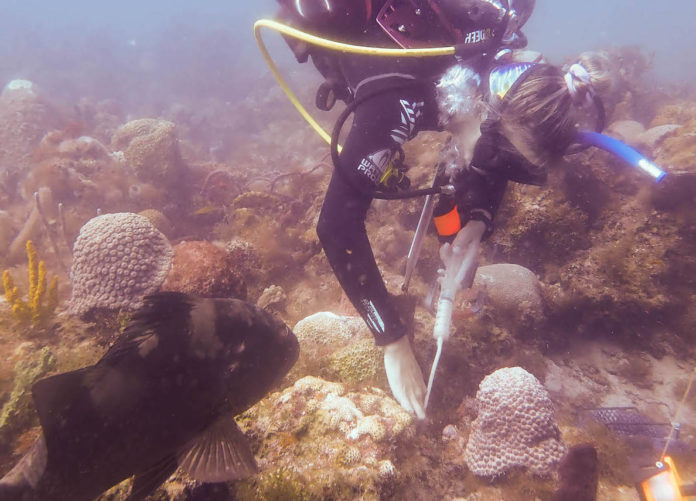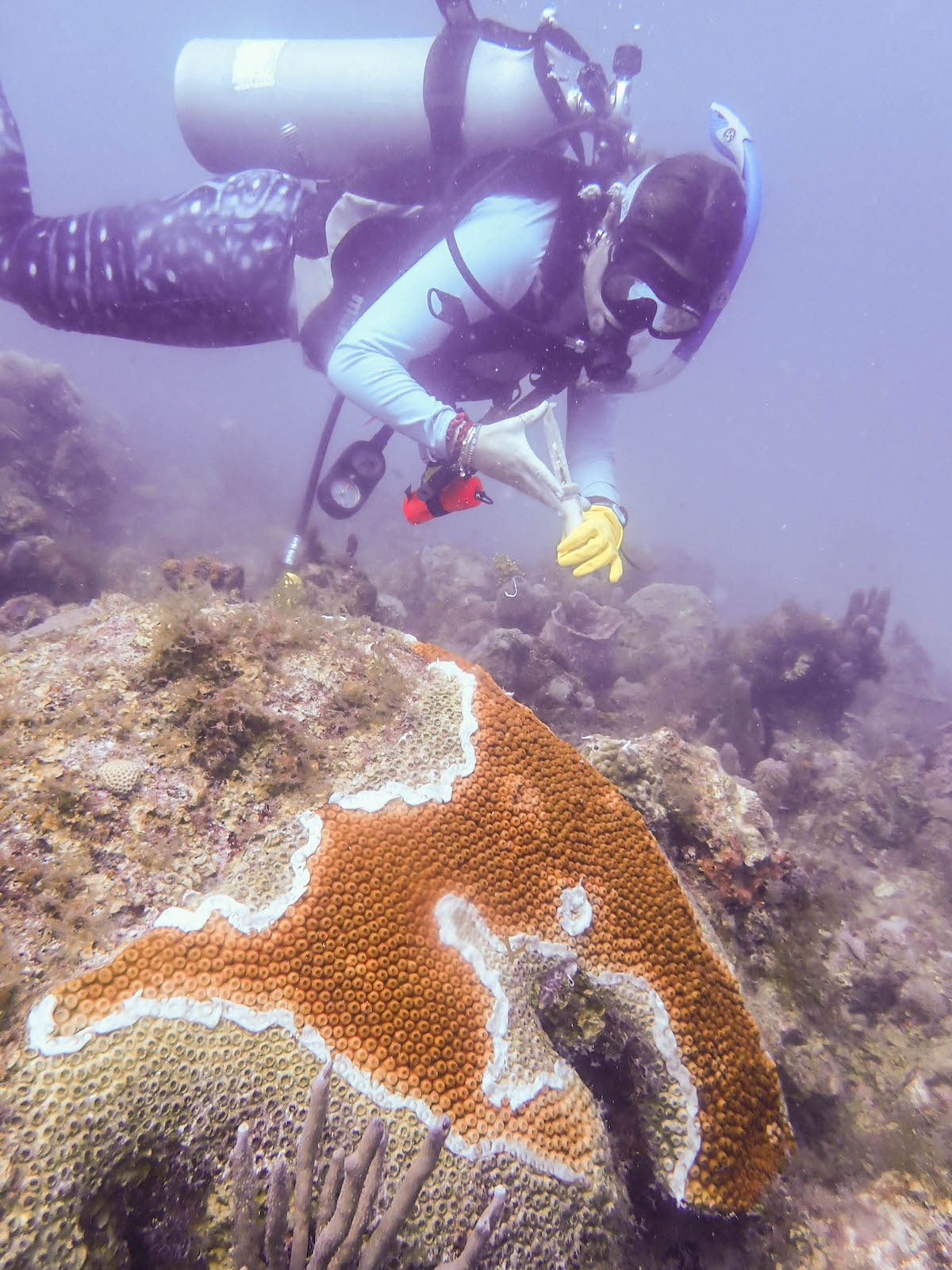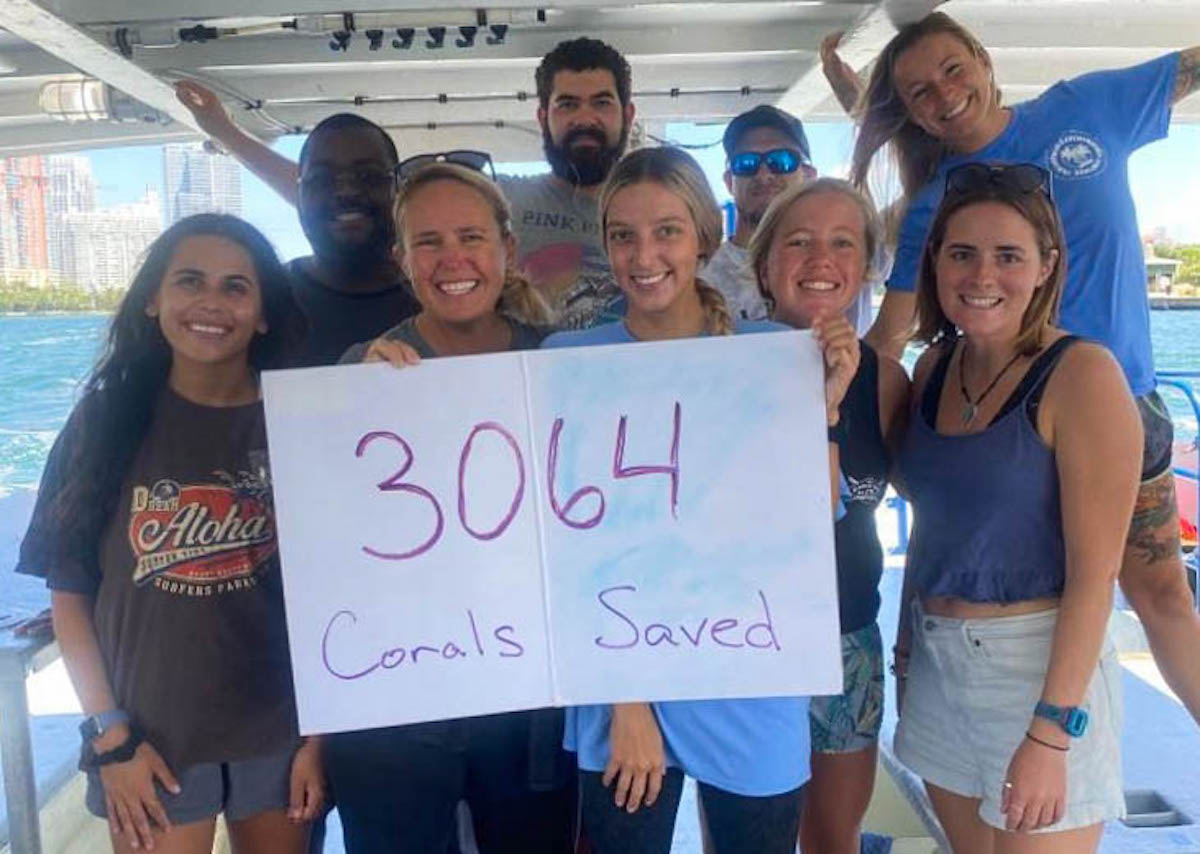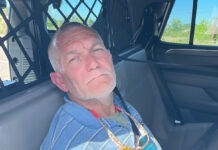
Up to 6,000 diseased corals in the Dry Tortugas may owe their lives to divers with a revolutionary antibiotic treatment. Aimed at saving corals infected with the rampant stony coral tissue loss disease, the treatment method should play a pivotal role in stopping the deadly disease running through Florida’s reef tract since 2014.
…And it looks a little like toothpaste.
Led by scientists with Nova Southeastern University (NSU), a team of 17 divers from NSU, Florida Atlantic University’s Harbor Branch Oceanographic Institute and the University of the Virgin Islands recently completed two treatment missions in the Dry Tortugas National Park. After surveying an area larger than 20 football fields, divers armed with dozens of treatment syringes spent nearly 250 hours applying a medical paste by hand to individual corals suffering from lesions caused by the deadly disease.
While the majority of the 6,000 treated corals are located on a high-priority reef close to Loggerhead Key, the divers also spent time around Fort Jefferson, arguably the most popular tourist destination within the park. Once an infected coral is identified, divers work to apply a proprietary amoxicillin paste developed by manufacturer Ocean Alchemists to the edges of the lesion.
Though much still remains to be learned about SCTLD, the treatment has thus far proven highly effective, with Ocean Alchemists reporting more than an 85% success rate in treating the disease responsible for killing more than two thirds of the corals it infects.
“We’re really trying to prevent further losses,” said NSU’s Karen Neely. “We can go out and work with these corals that are hundreds or thousands of years old that are still alive, but would be dead without us.”
Coral diseases are “notoriously difficult to diagnose,” she told Keys Weekly, adding that the exact pathogen behind SCTLD is still unknown and its origin in the Miami area in 2014 is still partly a mystery. But so far, the paste has been a godsend.
Neely said her team is acutely aware that introducing antibiotics into a natural environment can merit an understandably cautious response from regulatory agencies such as the Florida Keys National Marine Sanctuary. However, the alternative could be much worse.



“There isn’t anyone who says, ‘Oh my gosh, I just want to go put more antibiotics into the ocean,’” she said. “But if the alternative is your reef dying, then suddenly antibiotics don’t look so bad.”
With such a focused application directly onto the coral lesions, her team has seen little, if any, leaching of the product into the surrounding environment. Studies within the last year have investigated potential unintended effects of the paste on the treated organisms, but have so far found no impact on the corals’ photosynthesis, respiration or reproduction.
“This was a real push, particularly from the Florida Department of Environmental Protection,” she added. “We have to do something; we’re losing everything right now. This is the tool we have in the toolbox. Let’s do it.”
While the Tortugas missions accomplished a great deal, Neely and her team were tasked with the same goal along the reef tract lining the Florida Keys. In recent years, the island chain has seen an explosion in eco-tourism efforts involving locals, volunteers and tourists alike in coral outplanting missions – a process by which disease-resistant coral genotypes are fragmented, allowed to grow, and eventually returned to the reefs to repopulate the living coral cover.
However, due to current regulatory restrictions, Neely’s small team is among the few professional science divers licensed to perform this particular type of coral triage. And while each approach to the goal absolutely has its place in an ecosystem ravaged by the disease, she said she would welcome assistance in administering a fast-acting, cost-effective treatment. In just three days, the amount of coral tissue saved by the Tortugas team equates to 190,000 outplants.
“Our goal is to preserve what we call iconic corals and prevent them from disappearing, which also benefits restoration because … they can focus on what has already been lost. So I think those two missions kind of work in parallel,” she said. “But frankly, it’s a lot easier to stop a coral from dying than it is to replace it, especially when you’re talking about corals the size of living rooms.”

























